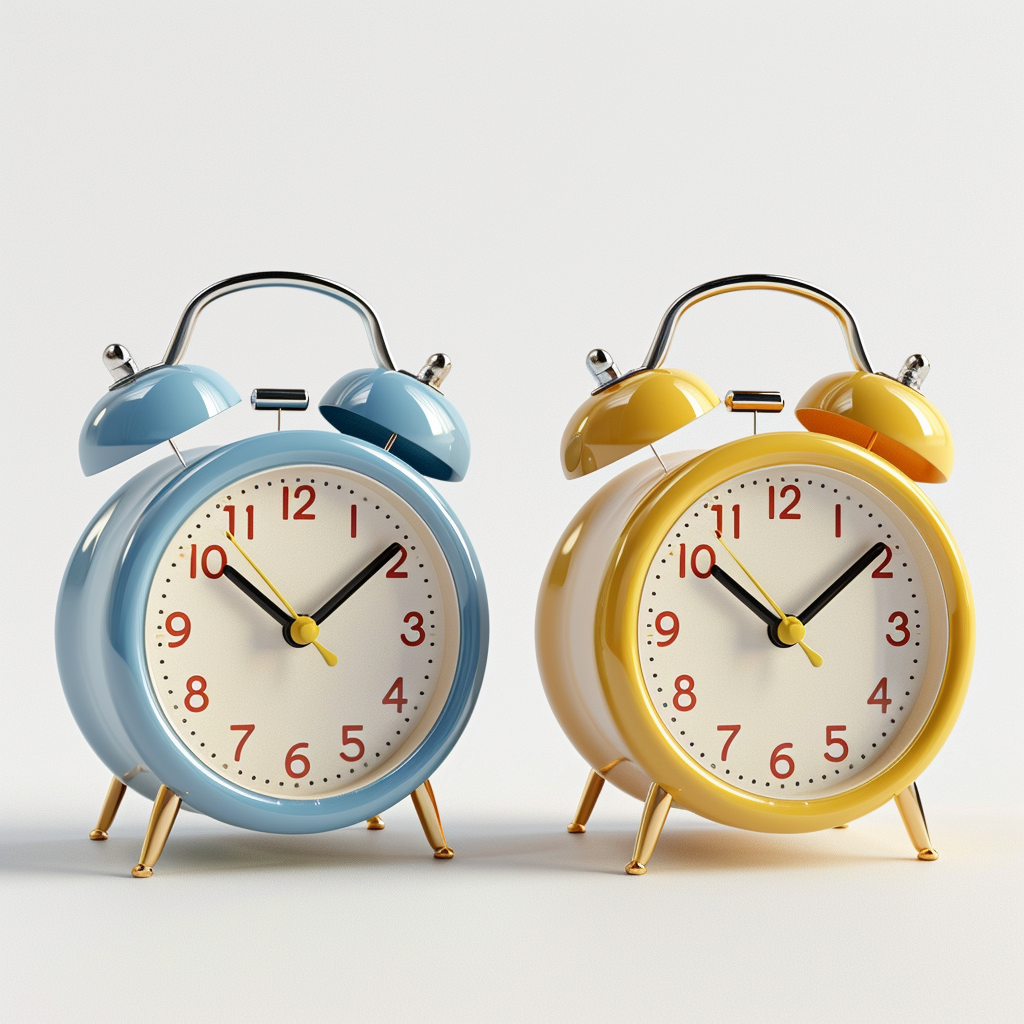
Wake Up Light offers a simple way to create a light alarm clock that ensures you wake up to gradually brightening light in the morning. For those who want to make sure they are truly awake by the set time, it’s advisable to also use a second regular alarm clock.
But what to do if your wake-up time changes daily – do you have to set two alarms every day? If you use your iPhone with its sleep schedule to wake up, you can synchronize the light alarm clock with the sleep schedule using Shortcuts. This requires the Premium Mode of Wake Up Light.
Setting up Sleep Schedule Alarm
Your sleep schedule alarm is a special alarm on your iPhone. It differs from regular system alarms, of which you can have several. With this sleep schedule, you inform your iPhone when you want to go to bed, how long you want to sleep regularly, and of course, when you want to wake up and be awakened on which days. The synchronization via the available shortcut only works with the sleep schedule alarm. So make sure you have set up a sleep schedule and remember the days when it wakes you up with an alarm.
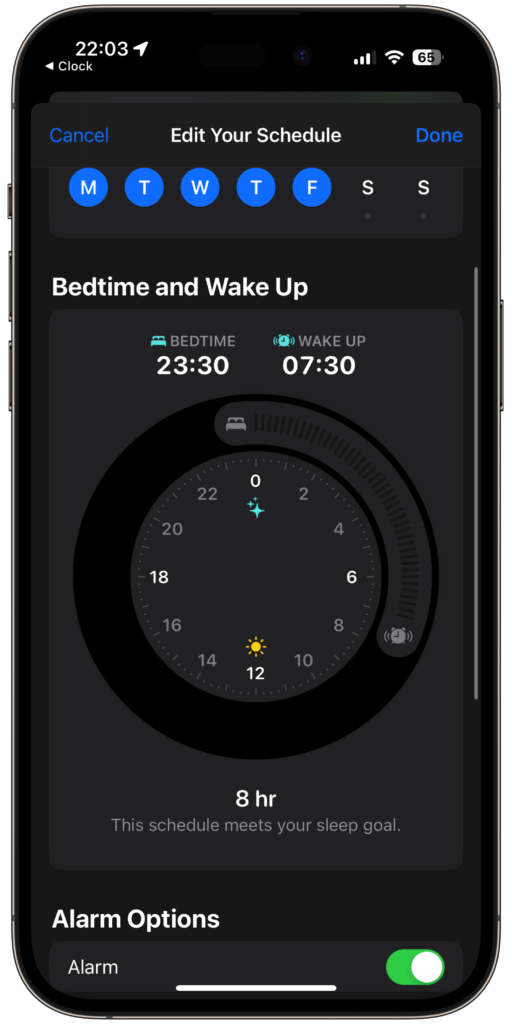
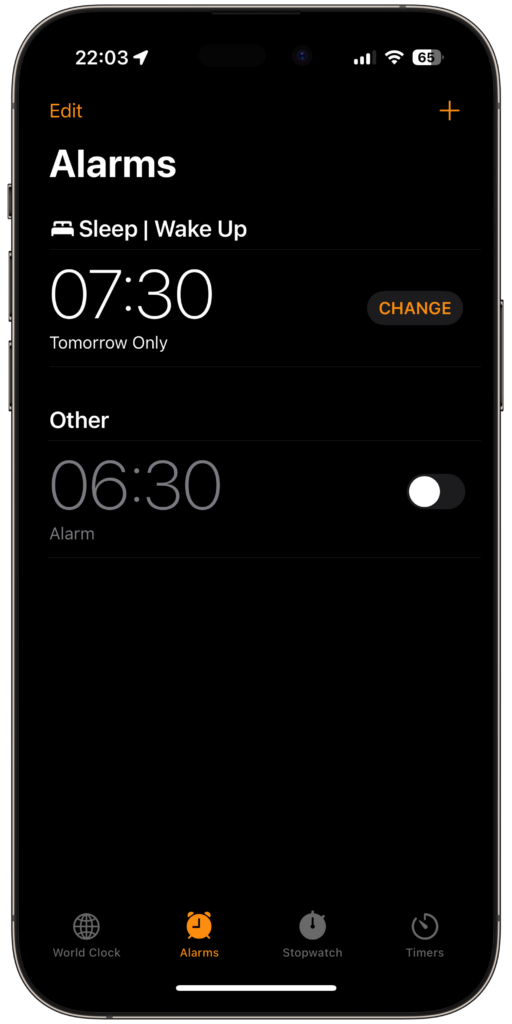
Setting up Synchronization Shortcut
Note: The shortcut is still in an experimental status and has not been extensively tested. Use the shortcut with caution; it could cause your alarm to deactivate without your knowledge or change the time. Feel free to send us a message about whether the shortcut works for you or what other experiences you’ve had with it.
Download the following shortcut, which synchronizes your light alarm clock with your iPhone alarm under iOS 17. Unfortunately, it has not been tested on iOS 16.
To ensure that this shortcut synchronizes your alarms every day, you must set it up as a personal automation. To do this, go to the Shortcuts app, select the “Automations” tab, and then add a personal automation. Here, select all the days when your sleep schedule normally includes an alarm, e.g., Mon-Fri., as explained in the section on the sleep schedule alarm.
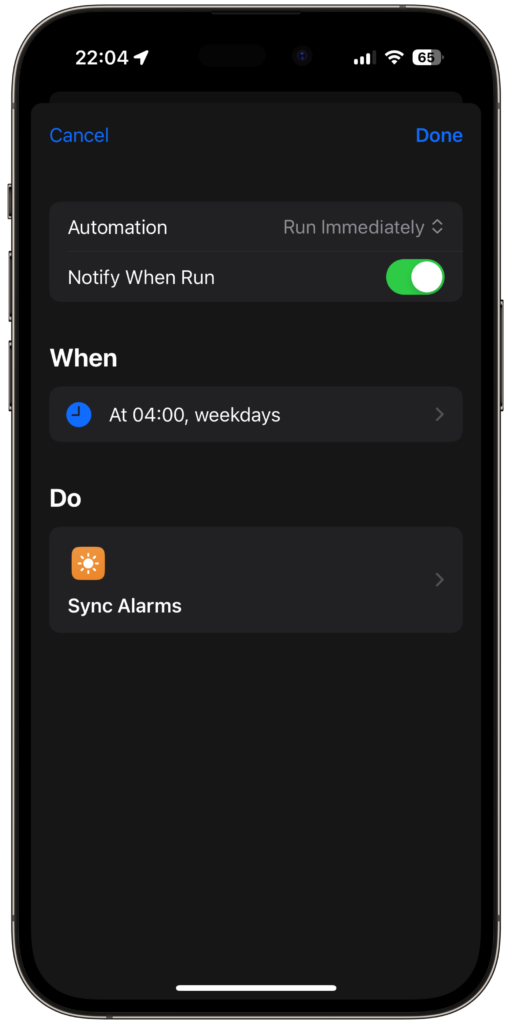
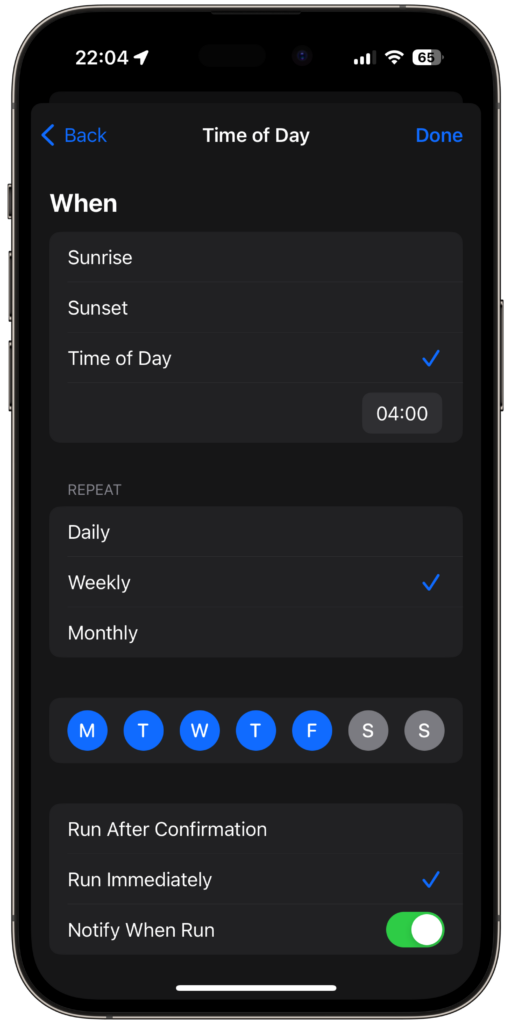
Next, set the time when the shortcut will be executed. Timing is crucial here: ideally, schedule the personal automation after your usual bedtime but long enough before your earliest morning alarm. This ensures that the synchronization occurs after you have adjusted your alarm for the next day. For me, the best time is 3-4 a.m.
Set up your Light Alarm Clock
To be double-woken up, simply adjust your sleep schedule for the next day. You can do this either through the Clock app or, if you have the Sleep Focus enabled, directly from the lock screen.

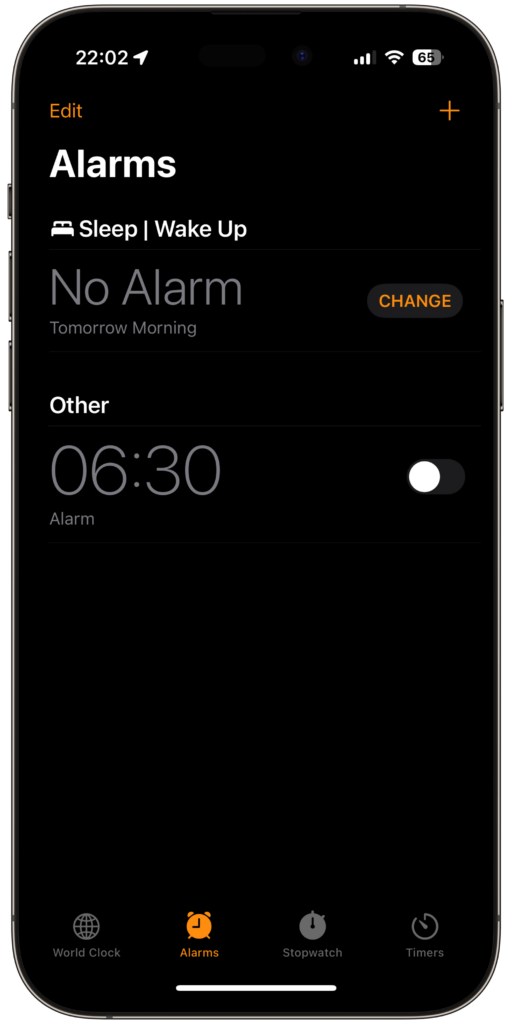
You can also skip the alarm, so your light alarm is also deactivated. One thing that is not possible is to set an alarm on a day when a sleep schedule alarm is not normally active. This will be deactivated as soon as the shortcut runs! If in doubt, after setting an alarm, execute the shortcut to see what happens to your alarms.
How does the Shortcut work?
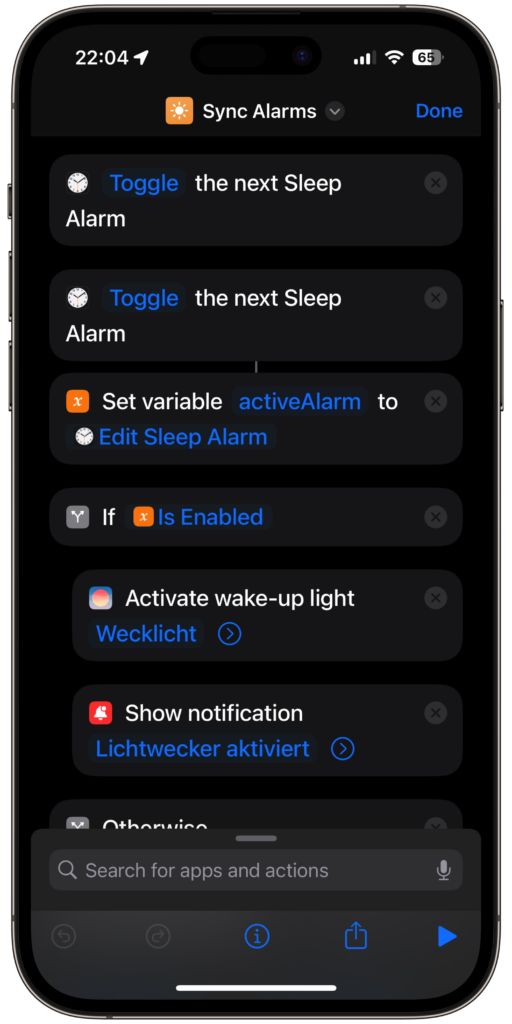
iOS 17 offers the following actions within a Shortcut to interact with the sleep alarm:
- Activate sleep alarm
- Skip next sleep alarm
- Toggle sleep alarm
There is no action to simply get the next sleep alarm. Therefore, the shortcut relies on toggling the sleep alarm. It uses this action twice, as toggling twice essentially restores the original state. Once the shortcut obtains the time of the next alarm, it sets the configured light alarm to the next wake-up time or deactivates it if no alarm is set. Unfortunately, there are cases where it does not work. If an alarm is set, even though the sleep schedule does not normally include an alarm for the day, the first toggle results in no alarm existing anymore. The second toggle then no longer activates the alarm, resulting in both alarms (system and light alarm) being deactivated. Thus, this problem can only be circumvented by running the shortcut only on days when an alarm is normally activated by default.
Notes
The shortcut works from iOS 17 onwards; older operating systems are currently not supported, as Apple has made access to the sleep schedule alarm more difficult from iOS 17 onwards. Additionally, the shortcut only works with the sleep schedule alarm and not with the other system alarms, of which you can create as many as you like.